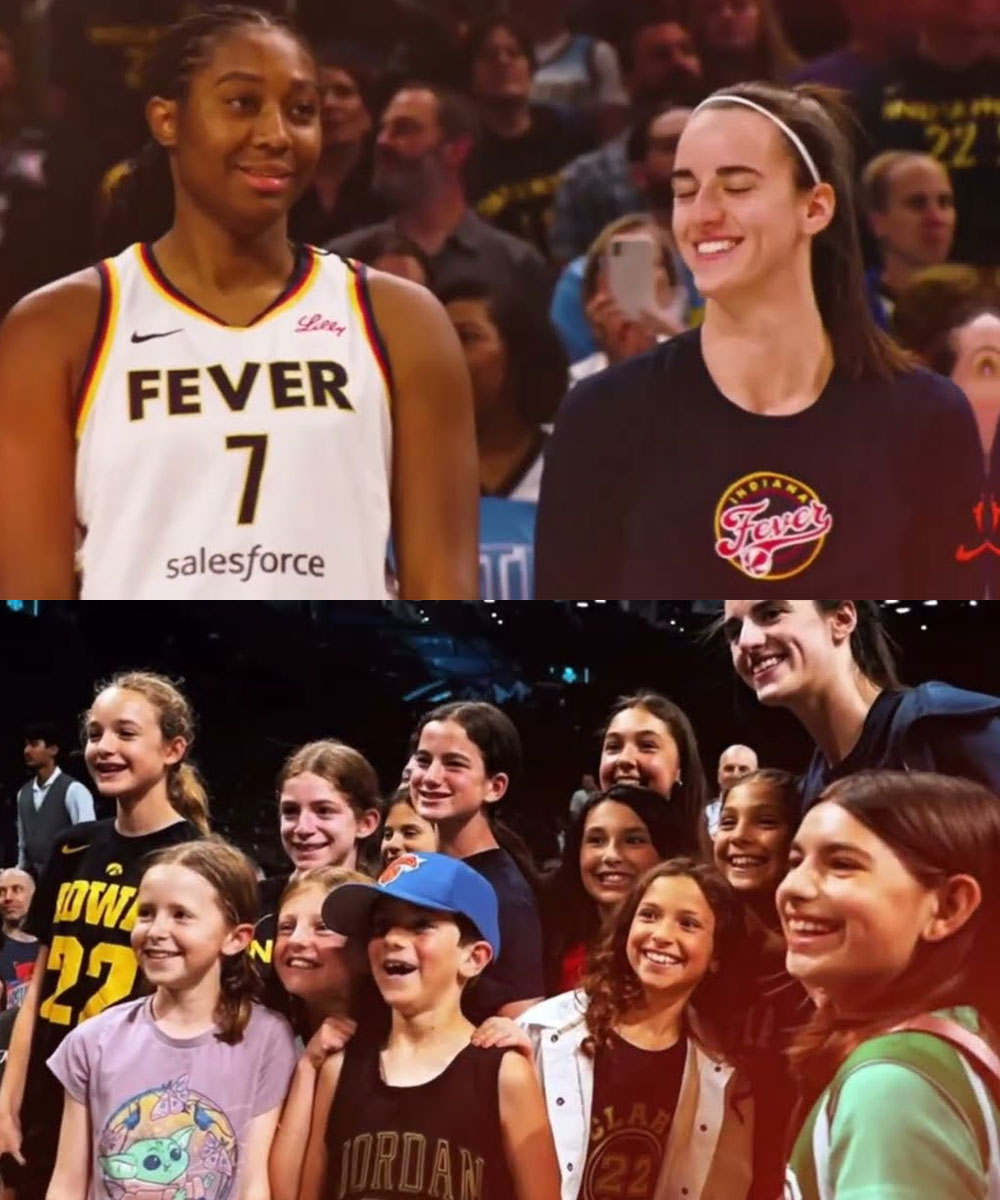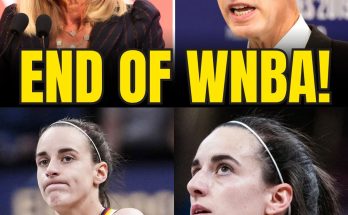The WNBA’s Crisis: Caitlyn Clark’s Injury Reveals the League’s Fragile Future
In a stunning turn of events, the WNBA’s golden goose, Caitlyn Clark, has been sidelined with a left quad strain, and the fallout has been nothing short of catastrophic. The league, which has staked its future on the incredible star power of Clark, now faces an existential crisis.
As the news broke that Clark would miss time, ticket prices for games plummeted, sparking a flurry of concern within the WNBA’s front office. What had once been an era of skyrocketing ticket sales and mainstream attention now looks like a fragile house of cards that has come crashing down in real-time.

Ticket Prices in Free Fall: The Financial Impact of Caitlyn Clark’s Absence
Before the injury, Caitlyn Clark was the undeniable face of the WNBA. Her presence in any game was enough to send ticket prices soaring. Games that featured Clark had seen prices in the $150 range for lower-level seats, with upper decks often selling out as fans flocked to see one of the most electrifying players in basketball today. But now, with Clark out of action, prices have plummeted.
In some cities, tickets for upcoming games have dropped by more than 70%. For instance, a game that was initially priced at $86 has now been slashed to $25, and in some markets, you can even snag a seat for less than $10. The steep drop in ticket prices is not just a reflection of the league’s fragility but a stark indicator of just how reliant the WNBA has become on one player.
Caitlyn Clark’s Transformative Influence: From Financial Boom to Crisis
Caitlyn Clark’s impact on the WNBA has been nothing short of transformative. According to an analysis from a finance professor at Indiana University, Clark accounted for a staggering 26% of the league’s total economic activity during her rookie year on a team that was far from championship contenders. Her ability to sell tickets, boost viewership, and create mainstream buzz has been unmatched.
Colin Cowherd of The Herd compared her influence to that of sports icons like Tiger Woods and Michael Jordan, stating that Clark is “saving the WNBA.” Her presence on the court didn’t just fill arenas; it turned them into must-see events, elevating the league’s profile and providing it with the kind of visibility that had long been lacking.
Before Clark arrived, the WNBA struggled with profitability and relevance. But now, with her out of commission, the league is being forced to confront the harsh truth: without her, the WNBA’s future is in jeopardy. The financial impact of her absence is profound. From sold-out games to soaring merchandise sales and explosive media coverage, Clark’s star power was driving the WNBA’s economic engine. Now, with her sidelined, the league’s financial foundation is crumbling.
The Price of Star Protection: How the WNBA Failed Caitlyn Clark
Clark’s injury didn’t come out of nowhere. Throughout the season, she was subjected to relentless physicality, with little to no protection from officials. She was hacked, shoved, and fouled repeatedly, yet the referees consistently failed to call the fouls. This lack of protection was a glaring oversight on the part of the WNBA, and now the league is paying the price for its negligence. Her coach, Stephanie White, openly criticized the referees for allowing Clark to be targeted without consequence, stating that Clark was not being given the same protections as other players.
This failure to shield their star player has not only cost the WNBA a key asset but has also sent a troubling message to future players: the league won’t protect you. The growing sense of injustice surrounding Clark’s treatment has been amplified by the toxic factions of social media, where some fans have even celebrated her injury. This toxic culture, fostered by a lack of accountability and oversight, is now threatening the integrity of the league and its future.
A New Reality for the WNBA: Can the League Survive Without Caitlyn Clark?
The WNBA now faces a crossroads. With Clark’s injury, the league is being forced to confront its own fragility. Can the WNBA continue to thrive without its biggest star, or is this injury a sign of deeper structural issues within the league? The financial collapse in ticket prices, the erosion of fan interest, and the growing sense of disillusionment all point to one hard truth: without Clark, the WNBA’s future is uncertain.
If Clark’s injury lingers or if she is unable to return to her previous form, the WNBA could face even more serious challenges. The marketing plan, the ticket sales strategy, and the league’s overall image have all been built around one player. What happens when that player is no longer able to deliver? The WNBA’s reliance on Clark has never been more apparent, and now the league must face the consequences of placing so much of its success on her shoulders.
What Happens Next? A Wake-Up Call for the WNBA
If there’s any hope left for the WNBA, it lies in Clark’s potential recovery. The league has a chance to salvage its reputation and rebuild trust with fans, sponsors, and broadcasters, but only if they take the right steps. This includes protecting their stars, improving officiating, and fixing the toxic culture that has allowed the targeting of players like Clark to go unchecked.
The WNBA has been handed a second chance. If Clark comes back healthy and the league learns from this crisis, there is still time to rebuild. However, if they fail to protect their players and continue to prioritize drama over the game, the league may lose the very momentum that Clark brought them.
In the end, this isn’t just about one player’s injury; it’s about the future of the league. The WNBA has an opportunity to prove that it’s more than just a marketing spectacle, more than just a league built on one superstar. Whether it can capitalize on this moment and secure its place in the sports landscape remains to be seen. But if the league doesn’t change course, the consequences could be far-reaching—and potentially irreversible.



